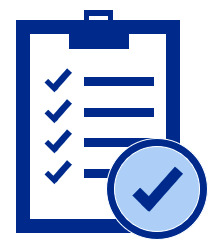A Midyear Portfolio Checkup in 5 Steps
Jul 13, 2020 • Written by Paul Staib | Certified Financial Planner (CFP®), MBA, RICP®
Blog Home » Asset Allocation » A Midyear Portfolio Checkup in 5 Steps

We’re at the halfway point in 2023, and the first half has provided solid market returns after a rather tumultuous 2022. As such, it may be an appropriate time to perform a review of your investment portfolio to determine if any adjustments are in order. I usually suggest that conducting such a review once or twice a year – or quarterly, at most – is more than enough for most investors. As you methodically review your portfolio at the mid-year point, here are some of the key components to focus on.
Step 1: Check your Progress Toward your Goal(s)
The most important step in any portfolio checkup is a basic “wellness check,” an assessment of whether your current portfolio balance, along with expected additional contributions over your time horizon, puts you on track to reach your financial goals. Rules of thumb can be a good starting point.
- If you’re a younger accumulator, these benchmarks provided by Fidelity Investments can help you see if you need to step up your contributions.
- If you’re closer to retirement, you can run your portfolio through the 4% guideline: Is 4% of your anticipated aggregated portfolio value at the outset of retirement going to provide you with enough income to augment what you’re getting from certain sources of income such as Social Security and/or a pension?
- If you’re already retired, use this opportunity to check up on your current spending rate. Is it in line with your target, or is some belt-tightening in order?
Step 2: Assess your Asset Allocation versus your Targets
Because your portfolio’s stock/bond/cash allocation is the biggest determinant of how it performs, the next most important step in any portfolio review is to assess your allocation relative to your target mix. Most investment custodians provide tools to enable investors to perform this step.
If you don’t have an asset-allocation target in mind, a general rule of thumb for a “Moderate” investor is to allocate ~120 minus your in equities, with the remainder allocated towards bonds. For example, a 50 year old moderate investor would target ~70% towards equities, ~30% towards bonds. Alternatively, investors can look to the allocations of a good target date funds geared toward people with their expected retirement date; Vanguard’s Target Retirement funds and T. Rowe Price’s Retirement lineups have well-thought-out asset allocations. These allocations aren’t a fit for every situation, however. For example, they’re geared toward retirements that are drawn out over many years rather than financial goals that are short-duration, such as college funding. And certain investors who are saving for retirement may not be good candidates for off the shelf financial guidance, but again, they are good starting points.
Hands off investors may be surprised to find that their portfolios are even equity-heavy relative to their targets, thanks to the fact that stocks have outperformed bonds over the past several years. For investors getting close to retirement, in particular, de-risking the portfolio by lightening up on stocks and adding the proceeds to high-quality bonds may be worth consideration. Yields on bonds have improved significantly and there is value of bonds as shock absorbers during equity-market downturns.
Step 3: Drill into your Sub-Equity Allocations
In addition to assessing your portfolio’s baseline stock/bond exposure, also drill beneath the surface to ensure that your portfolio’s sub-allocations are in line with your targets and that you’re not making any large, inadvertent bets. Entering into the third quarter of the year, one key weighting to keep an eye on is your equity portfolio’s share of foreign stocks. Foreign names have dramatically underperformed U.S. over nearly every trailing period; if you haven’t rebalanced, it’s a good bet your weighting overseas is lower than you intended it to be. Of course, it might be tempting to pull back on foreign stocks given the uncertainty in Europe and uninspiring growth in emerging markets. But the ugly-looking parts of a portfolio can frequently be the best sources of future return.
Another pronounced trend on the equity front has been under performance from small- and mid-cap stocks. X-Ray tools provides you with a view of how your equity portfolio is allocated across the U.S. style box (large, mid, small cap growth and value). Not everyone needs to have a portfolio that mirrors the overall market exposures, but it’s helpful to be aware if you’re making big bets on a given part of the market.
Step 4: Assess Cash Reserves
In addition to checking up on your portfolio’s asset-class and sub-asset-class exposure, your quarterly portfolio checkup should include an assessment of your liquid reserves, which may or may not show up in your X-Ray view. For retirees, I typically recommend holding one to two years’ worth of living expenses in true cash instruments. The baseline for people still working is three to six months’ worth of living expenses in cash, perhaps higher given the current environment.
Step 5: Search for Tax-Saving Opportunities
Shaky markets usually have at least one saving grace: the ability to improve your take-home return with tax-loss selling and other tax-saving measures. You can sell depreciated holdings from your taxable account and use those losses to offset capital gains elsewhere in the portfolio or up to $3,000 in ordinary income. You don’t have to sell your entire position to obtain a tax loss; if you’re using the specific share identification method of cost-basis accounting, you can cherry-pick those holdings that are underwater and leave in place shares that have appreciated since purchase and would trigger a tax bill when sold.
In many such cases, you may want to maintain exposure to the very market sectors that have dropped the most. While you can’t immediately re-buy the security you’ve just sold (otherwise you’ll disallow the tax loss), you can maintain like-minded exposure. For example, you could sell out of an individual energy stock and buy an energy ETF, or you could swap out of an actively managed foreign-stock fund and into an index product.
In addition to tax-loss selling, investors with tax-deferred accounts can get a helping hand from falling markets, too. The tax burden associated with converting Traditional IRA assets to Roth will be lower when the market is depressed than when it’s performing well.

Paul Staib | Certified Financial Planner (CFP®), MBA, RICP®
Paul Staib, Certified Financial Planner (CFP®), RICP®, is an independent Flat Fee-Only financial planner. Staib Financial Planning, LLC provides comprehensive financial planning, retirement planning, and investment management services to help clients in all financial situations achieve their personal financial goals. Staib Financial Planning, LLC serves clients as a fiduciary and never earns a commission of any kind. Our offices are located in the south Denver metro area, enabling us to conveniently serve clients in Highlands Ranch, Littleton, Lone Tree, Aurora, Parker, Denver Tech Center, Centennial, Castle Pines and surrounding communities. We also offer our services virtually.
Read Next
2017 Year End Tax Tips
• Written By Paul Staib | Certified Financial Planner (CFP®), MBA, RICP®
If tax time brings you stress, read on. First, take heart that you can act before the end of the…
5 Stealth Taxes That Can Impact Your Retirement
• Written By Paul Staib | Certified Financial Planner (CFP®), MBA, RICP®
Every year, an increasing number of retirees are impacted by one or more “stealth” taxes. While certain taxes may be…
